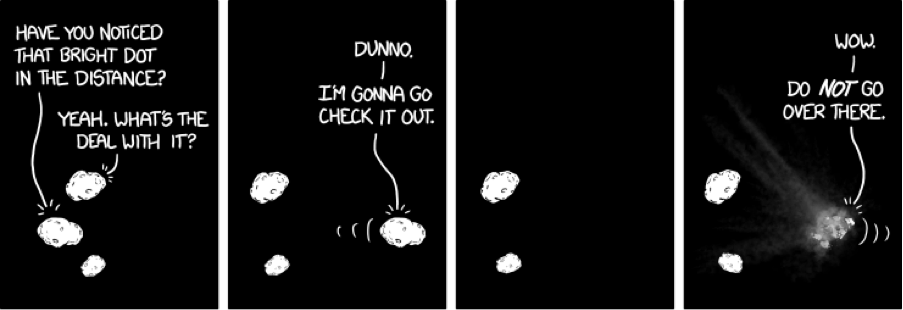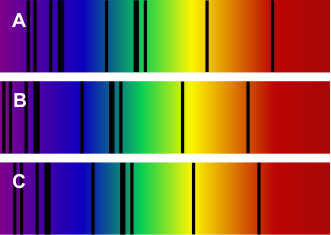156 Summary — Physical Geology – 2nd Edition
Astronomers looking for some of the earliest stars in the universe were surprised to find a planetary system called HIP 11952, which existed 12.8 billion years ago. This was very early in the universe’s history, when stars still consisted largely of hydrogen and helium. Do you think there were terrestrial planets in this system? Why or why not?
Summarize the trends in size and composition of objects in the solar system.
What is the frost line, and what does it help to explain?
This cartoon shows three of the same type of solar system object. One goes on an adventure and comes back the worse for wear. What are the objects, and where might they be located?

Why is Pluto not considered a planet?
What is differentiation, and what must happen to a planet or asteroid for differentiation to occur?
The exoplanet Kepler-452b is within the habitable zone of its star. In our solar system, planets a similar distance from the Sun are terrestrial planets. Why can we not say for certain that Kepler-452b’s distance from its star means it is a terrestrial planet?
Of the planetary systems discovered thus far, none are exactly like our solar system. Does this mean our solar system is unique in the universe?
Media Attributions
- Figure A: © Karla Panchuk. CC BY.
- Figure B: “Oort Cloud” © Randall Munroe. CC BY-NC.
<!– pb_fixme –>
<!– pb_fixme –>


